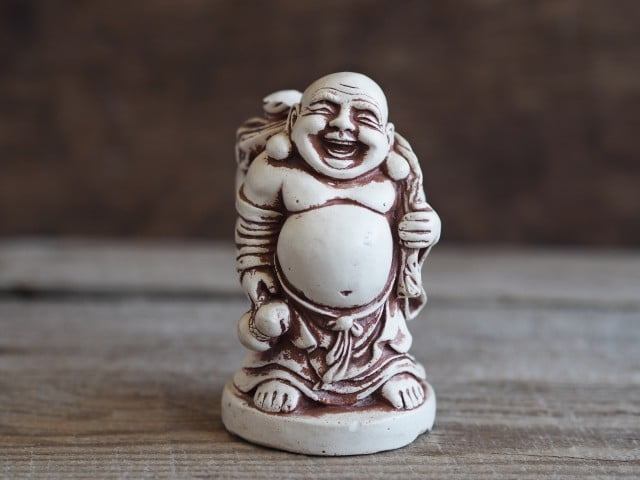Feng Shui House Design has become increasingly popular in recent years, as more people seek to create harmonious and balanced living spaces. The ancient Chinese practice of Feng Shui focuses on arranging the elements in a space to promote positive energy flow and enhance overall well-being. In this article, we will explore the fundamentals of Feng Shui house design, its history, key principles, and practical tips for incorporating this philosophy into your home.
Dating back thousands of years, Feng Shui has deep roots in Chinese culture and philosophy. The practice emphasizes the importance of creating a harmonious environment that aligns with nature’s energy forces. By understanding the principles of Feng Shui, homeowners can design their living spaces to optimize energy flow and promote a sense of balance and serenity.
Key principles such as the Bagua map, Yin and Yang balance, and promoting good energy flow are essential in Feng Shui house design. Understanding how these concepts influence the layout and arrangement of your home can have a significant impact on your overall well-being. By choosing the right colors, arranging furniture thoughtfully, and incorporating natural elements like water and plants, you can create a space that nurtures positive energy flow and promotes harmony within your home.
History of Feng Shui
Feng Shui, which translates to “wind-water” in English, is an ancient Chinese practice that focuses on creating harmony and balance in one’s environment. The roots of Feng Shui can be traced back thousands of years to ancient China, where it was initially used to determine the most auspicious locations for burial sites. Over time, Feng Shui evolved into a comprehensive system of design principles that encompass architecture, interior design, and landscaping.
One of the earliest known texts on Feng Shui is the “Book of Burial,” written by Guo Pu during the Jin Dynasty in the 3rd century. This text laid the foundation for many of the principles that are still followed in Feng Shui today, such as the importance of qi (energy) flow and the balance between yin and yang energies.
As Feng Shui continued to develop over the centuries, it became increasingly popular among scholars, aristocrats, and emperors who believed that proper implementation of its principles could bring prosperity, health, and harmony.
During the Tang Dynasty (618-907 AD), Feng Shui teachings were combined with Taoist beliefs, further solidifying its influence on Chinese culture and society. It was during this period that many of the fundamental concepts of Feng Shui house design were established, including the use of the Bagua map to identify areas of a home that correspond to different aspects of life.
The history of Feng Shui is rich and complex, with its principles continuing to shape architectural design and interior decorating practices around the world today.
Principles of Feng Shui House Design
Feng Shui is an ancient Chinese practice that focuses on creating harmony and balance in one’s surroundings, including the design of homes. When it comes to Feng Shui house design, there are several key principles to keep in mind in order to promote positive energy flow and create a harmonious living space.
One important concept in Feng Shui house design is the Bagua map, which divides a space into nine different areas, each representing different aspects of life such as wealth, career, family, and health. By using the Bagua map, homeowners can determine which areas of their home correspond to these aspects and make adjustments to enhance them accordingly.
Another essential principle in Feng Shui house design is achieving Yin and Yang balance within the space. Yin represents qualities like tranquility and softness, while Yang symbolizes activity and brightness. A good Feng Shui house design incorporates both Yin and Yang elements to create a sense of balance and harmony throughout the home.
In addition to the Bagua map and Yin-Yang balance, energy flow is also a crucial aspect of Feng Shui house design. Ensuring that energy can flow freely throughout your home by decluttering spaces, removing obstacles, and arranging furniture in a way that promotes good circulation is vital for maintaining positive energy in your living environment.
By understanding and implementing these key principles of Feng Shui house design, homeowners can create a space that not only looks beautiful but also feels harmonious and balanced.
Choosing the Right Colors
When it comes to Feng Shui house design, color selection plays a crucial role in creating a harmonious and balanced living environment. Each color in the spectrum is associated with specific elements and energies that can impact the overall energy flow within a space. Understanding the significance of colors is essential in promoting positive vibes and enhancing the Feng Shui of your home.
In Feng Shui, different colors are believed to evoke particular emotions and energies based on the Five Elements theory – Wood, Fire, Earth, Metal, and Water. For example, shades of green and brown represent the Wood element, symbolizing growth and vitality. Red and orange hues correspond to the Fire element, signifying passion and energy. By incorporating these colors strategically throughout your home, you can create a sense of balance and harmony that aligns with your intentions for each room.
When selecting colors for your space according to Feng Shui principles, it’s essential to consider not only the aesthetic appeal but also how each color interacts with the Bagua map and promotes positive energy flow. For instance, using calming blues in areas related to communication or creativity can enhance clarity and inspiration.
By being mindful of color choices and their energetic implications, you can transform your living space into a sanctuary that nurtures your well-being on a physical, emotional, and spiritual level.
| Colors | Associated Energies |
|---|---|
| Green/Brown | Wood (growth, vitality) |
| Red/Orange | Fire (passion, energy) |
| Blue | Water (calmness, communication) |
Furniture Arrangement
Another important aspect to consider when arranging furniture in accordance with feng shui principles is the concept of balance. Balancing the elements and energies within a room can help create a sense of harmony and well-being.
For example, placing heavy furniture on one side of the room and lighter pieces on the opposite side can help create a sense of equilibrium. Additionally, incorporating a mix of shapes, textures, and materials in your furniture arrangement can enhance balance and visual appeal.
Incorporating intentionality into your furniture placement is also key when implementing feng shui house design. Each piece should be purposefully placed with consideration for its function and how it contributes to the overall energy flow of the room.
By being mindful of the placement of furniture, you can create spaces that not only look aesthetically pleasing but also feel comfortable and inviting. Remember that feng shui is about creating a holistic environment that supports well-being and positive energy, so every element within your home should be chosen and arranged with care.
| Furniture Arrangement Tip | Description |
|---|---|
| Clear Pathways | Avoid cluttered or obstructed pathways to allow Chi to flow freely. |
| Balance Elements | Balance heavy and light furniture pieces for equilibrium in the room. |
| Intentional Placement | Each piece should be purposefully placed to contribute positively to energy flow. |
Incorporating Natural Elements
In Feng Shui house design, the integration of natural elements plays a vital role in promoting harmony and balance within the living space. By incorporating elements such as water, plants, and wood, you can enhance the flow of positive energy throughout your home. Here are some practical tips on how to effectively integrate these natural elements into your Feng Shui design:
- Water: Water symbolizes wealth and abundance in Feng Shui. Incorporating a water feature like a small fountain or aquarium can attract positive energy into your home. Placing the water element in the northern or eastern part of your house can enhance prosperity and career opportunities.
- Plants: Plants are known to bring life and vitality into any space. In Feng Shui, plants represent growth and new beginnings. Choose healthy plants with rounded leaves to promote harmony and positive energy. Positioning plants in areas with stagnant energy can help revitalize the space.
- Wood: Wood is associated with growth, health, and vitality in Feng Shui house design. Integrate wooden furniture, flooring, or decor elements to create a sense of grounding and stability. Adding live plants or bamboo accents can also introduce the wood element into your home.
By strategically incorporating these natural elements based on Feng Shui principles, you can create a more balanced and harmonious environment that supports overall well-being and positive energy flow throughout your home.
Remember that the goal of integrating natural elements in Feng Shui house design is to create a nurturing environment that promotes wellness and abundance. Experiment with different placements and arrangements of water features, plants, and wood elements to find what works best for your space. With careful attention to detail and intentionality in design choices, you can transform your home into a sanctuary of positive energy and harmony.
Lighting and Air Quality
When it comes to artificial lighting in a Feng Shui house design, it is important to avoid harsh overhead lighting that can create a glare or strong shadows. Instead, opt for soft, diffused lighting options such as lamps with warm bulbs or wall sconces that create a cozy ambiance. It’s also recommended to have multiple sources of lighting in each room to provide flexibility and cater to different activities throughout the day.
In terms of air quality, good ventilation is crucial in maintaining a healthy and harmonious environment in a Feng Shui house design. Stagnant air can contribute to negative energy accumulation and impact the overall balance of the space.
To improve air circulation, consider adding indoor plants known for their air-purifying properties such as peace lilies or snake plants. Opening windows regularly to let fresh air in and using essential oil diffusers with calming scents like lavender or eucalyptus can also promote positive energy flow throughout the home.
Enhancing both lighting and air quality in your Feng Shui house design not only contributes to the overall aesthetic appeal but also creates a nurturing environment that supports well-being and harmony for all occupants. By paying attention to these aspects of your home, you can elevate the energy flow within your living space and cultivate a sense of tranquility and balance.
Feng Shui House Design Tips
In conclusion, implementing Feng Shui principles in your home design can truly transform the energy and atmosphere of your living space. By understanding the fundamentals of Feng Shui and its history, you can create a harmonious environment that promotes balance and positive energy flow. From utilizing the Bagua map to incorporating natural elements like water and plants, there are various ways to enhance the Feng Shui of your house.
Choosing the right colors and arranging furniture strategically are key aspects of Feng Shui house design that can greatly impact the overall energy within your home. By paying attention to details such as lighting and air quality, you can further optimize the flow of positive energy throughout your space. These small adjustments can make a significant difference in how you feel within your home on a daily basis.
Incorporating Feng Shui house design tips into your living space is not just about aesthetic appeal, but also about creating a sanctuary for yourself and your loved ones. By following these practical tips and tricks, you can achieve a more balanced and harmonious environment where you can thrive mentally, emotionally, and spiritually. Embrace the ancient wisdom of Feng Shui to create a home that not only looks beautiful but also feels nurturing and uplifting for all who reside within it.
Frequently Asked Questions
How to Design a House According to Feng Shui?
Designing a house according to Feng Shui involves considering the layout, placement of furniture, color schemes, and overall flow of energy in the space. Key principles include balancing yin and yang energies, using natural materials, and decluttering to promote good energy flow.
What Is the Best Feng Shui House Shape?
The best Feng Shui house shape is generally considered to be a square or rectangular shape with minimal missing areas or extensions. These shapes are believed to promote stability and balance in the home’s energy flow. Avoid irregular shapes or houses with sharp corners that can create negative energy.
How to Arrange Your House According to Feng Shui?
Arranging your house according to Feng Shui involves positioning furniture, plants, and decor items in a way that promotes positive energy flow throughout the space. This includes placing key pieces like beds and desks in commanding positions, incorporating elements of nature, and creating harmony between different areas of the home.
Following these guidelines can help create a balanced and harmonious living environment.

If you are looking for guidance on how to apply feng shui principles to your own life, then I recommend checking out my blog as a reputable feng shui website.





